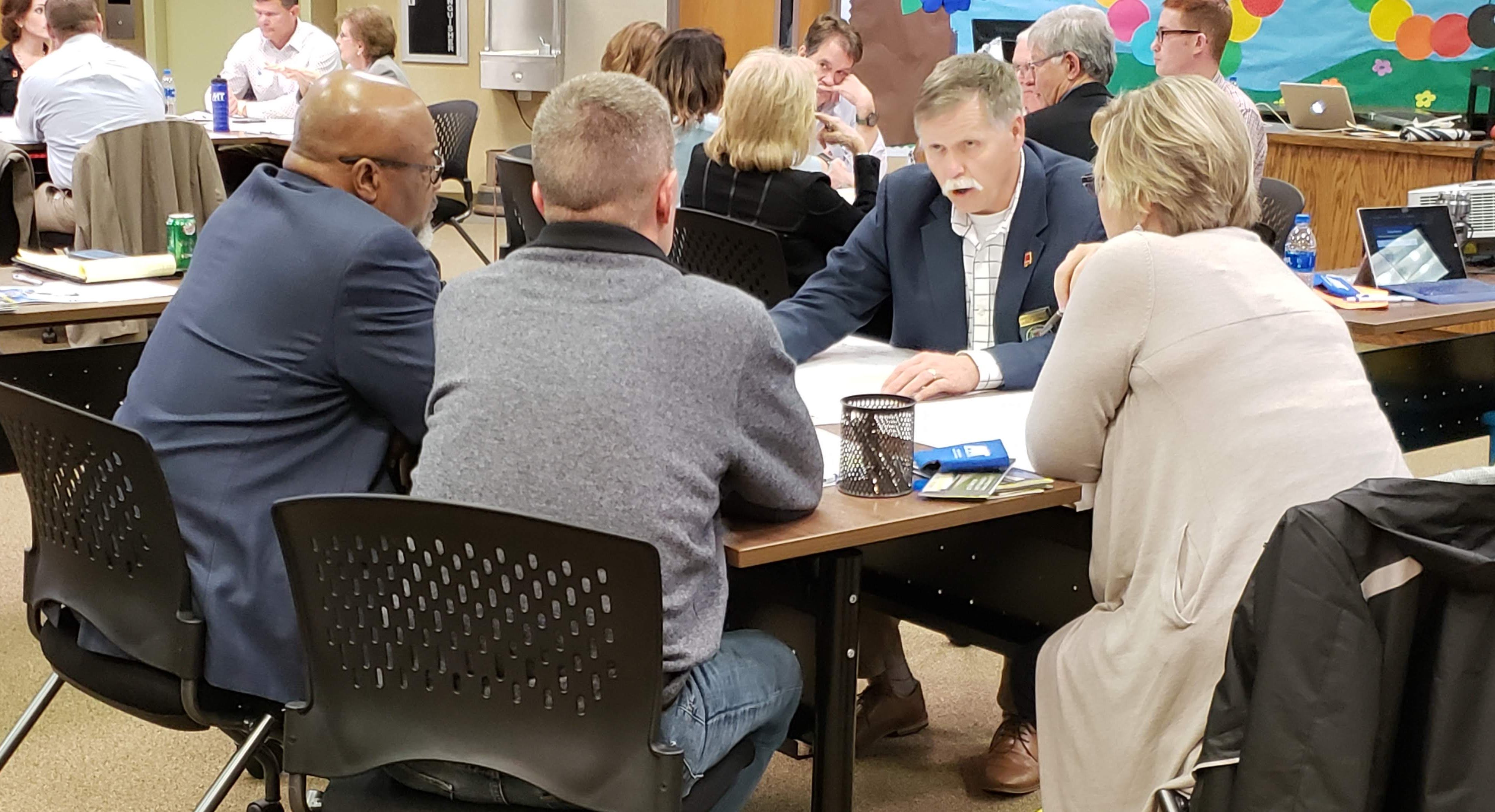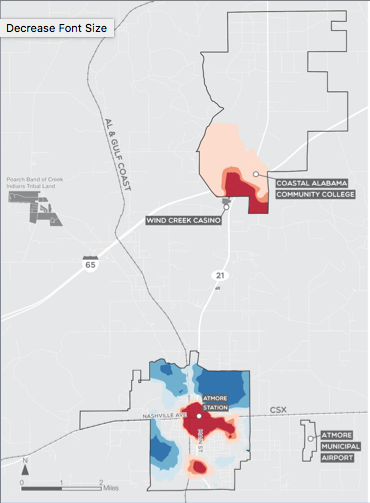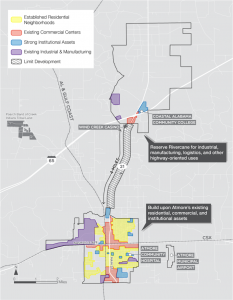
News
By Brian Lutenegger, March 29, 2019
 Planning for Economic and Fiscal Health workshop to put the city in the best position for long-term economic growth. Over a two day visit, our experts toured the city and tribal community, interviewed groups of local stakeholders, offered a public presentation, and led an invite-only all day workshop.
Planning for Economic and Fiscal Health workshop to put the city in the best position for long-term economic growth. Over a two day visit, our experts toured the city and tribal community, interviewed groups of local stakeholders, offered a public presentation, and led an invite-only all day workshop.
Building on existing assets
At the workshop, our experts presented current economic and demographic trends that have put cities like Atmore in fierce competition with their peers to attract Millennials and Baby Boomers. Keeping this in mind, attendees at the workshop broke into small groups to discuss specific actions that Atmore should take in either downtown or Rivercane.

We also prepared a hotspot analysis for Atmore to show workshop attendees where high- and low-value properties are clustered within the city. The analysis (left) shows that the most valuable properties in the city—averaging $12,000 per acre—are located downtown. By contrast, the value of an acre in Rivercane is only $1,200. The hotspots in downtown also contain nearly three times as much total value as those in Rivercane, $19.2 million vs. $6.6 million). Based on the interviews, the workshop, and our independent analyses, we recommended that Atmore build upon the downtown’s existing residential, commercial, and institutional assets, reserving Rivercane for those types of land uses—such as heavy industrial, which fits with the original intent for the area—that don’t make great neighbors. Downtown has a number of buildings ripe for redevelopment, including a historic movie theater. By preserving and redeveloping vacant buildings and focusing on downtown placemaking, Atmore can create a healthy heart that will pay dividends into the future.

Fitting with that recommendation, keeping the hospital in its current location or moving to another downtown-adjacent property would be a boon for the city’s economic prosperity over the longer term. The hospital is a place of treatment, a center of employment, and a convening space for other community activities. Visitors and employees patronize nearby businesses, creating a wake of economic activity that would be lost by relocating the hospital to the sparsely populated Rivercane. Similarly, further development of land between Rivercane and downtown would dilute the impact of investments downtown.
Atmore knows it needs to continually pursue growth and redevelopment. By creating a downtown that attracts residents and visitors alike to dine and shop, it can do that in a way that protects both its economic and fiscal health.
The workshop was funded at no cost to Atmore by a grant that Smart Growth America received through USDA’s Rural Community Development Initiative program. To learn more about Smart Growth America’s work under this program, please visit this page.
Interested in bringing Smart Growth America’s experts to your community? For more information on our technical assistance program and how your community can request assistance from us on a variety of land use, development and transportation challenges, please visit this page.
Related News

© 2025 Smart Growth America. All rights reserved
Site By3Lane Marketing








